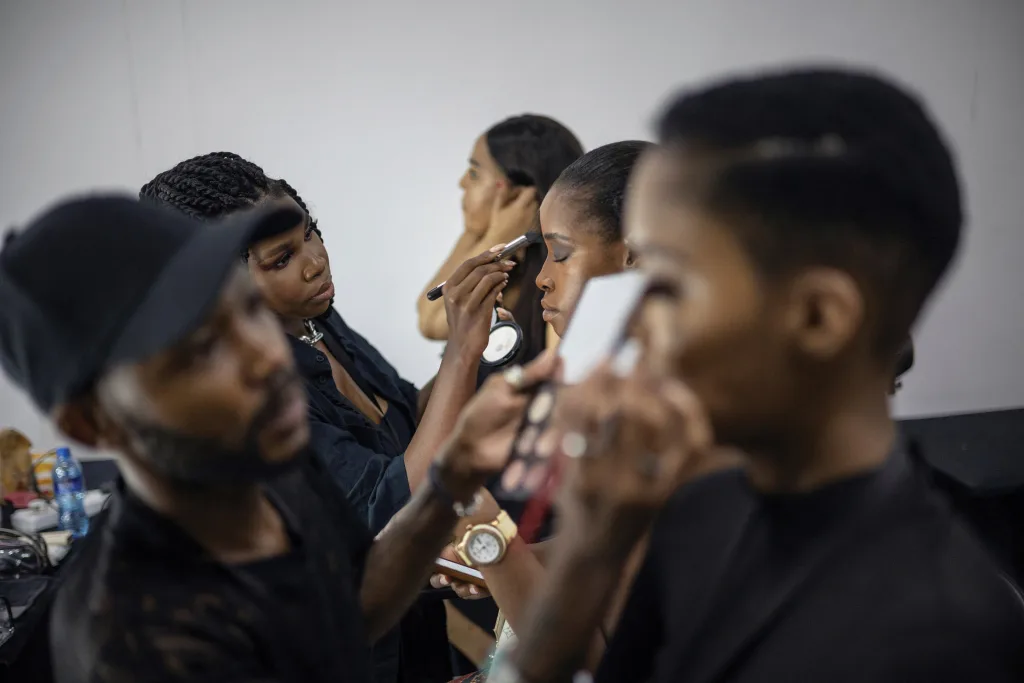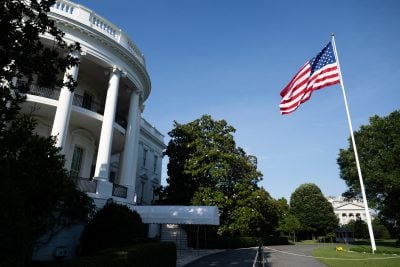On a sharply lit walkway within a darkened room, a troupe of young men and women sashay with purpose up and down a catwalk, dressed in the very latest and best innovative creations in fashion. This was the scene at Lagos Fashion Week in late October. Spanning four packed days, it drew crowds of fashion fans from across Africa and the world and UNESCO director-general Audrey Azoulay chose the close of the week to publish her inaugural report, Africa, a new global fashion leader, arguing that the continent is well on the way to becoming one of the next global fashion leaders.
The African continent hosts 32 successful fashion weeks every year including the upcoming Dakar and Accra Fashion Weeks which bring together designers and fashionistas alike, and the African fashion industry is valued at $15.5bn worth of exports annually. It seems difficult to believe that African fashion was ever anything other than highly in demand.
Watching the models at Lagos Fashion Week is its creator Omoyemi Akerele, who founded the exposition in 2011 to encourage the patronage of Nigerian and African fashion.
“Africans want to wear Africa. It’s really beautiful to see because it hasn’t always been like this,” says Omoyemi, speaking to Africa News. “But fast forward, a decade after, that’s all people want to wear.”
In the earlier years of the 21st century, African fashion was a casualty of increasing globalisation, and the adoption of Western fashion on the continent led to a decline in the use of traditional African fabrics and patterns, and concerns about the erosion of traditional African culture. Now, however, we are witnessing the welcomed reversal of this trend. So what has brought about this volte-face in the African fashion ecosystem?
Africa is a continent currently in a strong growth phase. It currently has a young population of 1.3 billion people which is set to double by 2050, by which time the United Nations estimates that more than a third of the world’s young people will live in Africa. As the UNESCO report notes, there is a growing consumer trend on the continent for Made in Africa fashion, particularly among young people and the growing urban middle-class who make up more than 35% of the population.
The rise of e-commerce and social media on mobiles is the perfect cocktail for increased market opportunities for the African fashion scene to gain exposure across the continent and around the world. The growing prevalence of social media, from Instagram to TikTok and YouTube, means that images and videos shared by African designers and consumers can be seen, liked, and shared by viewers around the world in a matter of moments.
In Nigeria as well as other African countries, young and upcoming fashion designers are carving out successful paths in the industry and consumers, it seems, just cannot get enough of their creations. Omoyemi attributes the growing consumer trend for African fashion to consumers seeing it as a symbol of pride and a way to affirm their identity, stating that “young African fashion designers are causing a stir in the international scene – reinventing the code of luxury whilst reconciling it with tradition, innovation and the demands of sustainable, local fashion and heritage.”
For the bright young things designing these innovative outfits, fashion means so much more than the simple materials and design of clothes – it is a way of life and a means of expression. Speaking to the Associated Press, designer Ejiro Amos-Tafiri, whose creations were displayed at Lagos Fashion Week, says that she uses her brand to tell African stories while celebrating “the sophistication, class and uniqueness of every woman.”
However, the remaining gulf that separates African fashion houses and designers from the unparalleled success enjoyed by their Western counterparts is predominantly lack of investment and funding to help them realise their creative visions. The African fashion industry is estimated to be worth $31bn, while the global fashion industry is estimated to be worth $2.5 trillion. This means that Africa’s fashion industry currently accounts for about 1.2% of the global fashion market. The continent remains, as Ejiro calls it “the next frontier for the fashion industry.”

At present, the African fashion sector is brimming with remarkable talent and creative visions brimming with potential, with established and emerging creators and designers combining artisan skills and techniques with innovation and creativity to create clothes that help shape the identity of the continent.
As Audrey Azoulay notes in the UNESCO report, the African fashion industry is not only a powerful lever for promoting Africa’s vast cultural diversity in global fashion houses, but is also a means of empowering young people and women in particular through education and work. It is a complex ecosystem compiled of many parts that create many opportunities for employment; from the farmers who grow crops to make what will become beautiful textiles and fabrics, to the tailors who create the clothes, to the models who display them on the catwalk, African fashion involves Africans from first to last and is truly a pan-continental effort.
The zeal, the ideas, and the demand from consumers are booming and raring to go. What is not there yet is the financial capital needed to fully support this sector which has the potential to be such a powerful driver of creativity and innovation. Lack of public and private sector investment is cited by Audrey as one of the key obstacles to the African fashion sector reaching its full potential, alongside gaps in fashion education and training, and lack of infrastructure amongst others.
In recognition of these barriers to the industry’s potential, the British Council recently announced the expansion of its hugely successful fashion accelerator programme, Creative DNA, across the continent during The Creative Africa Nexus 2023, which took place at the Intra-Africa Trade Fair in Cairo in October. The programme is specifically designed to support Africa’s fashion businesses by growing emerging designers’ skills, knowledge, and networks in Africa and the UK, and presenting them with showcasing and networking opportunities, and market access.
At its core, it aims to promote sustainable fashion practices and ethical design, as well as the use of traditional and artisanal techniques to champion African fashion and provide designers from across the continent with much-needed investment.A similar scheme was implemented several years ago by the Tony Elumelu Foundation which encourages governments and other stakeholders to support young entrepreneurs in the fashion industry by providing access to funding, mentorship, and training programmes, to promote African fashion and talent on the global stage.
The immense popularity of Africa’s fashion weeks and the global recognition now enjoyed by many designers from across the continent shows that Africa has all it takes to become one of the next world fashion leaders. With the publication of UNESCO’s report and the growth of global schemes supporting the African fashion industry from its core, the world is finally waking up to African fashion and beginning to connect the dots on how it can thrive and prosper.
Want to continue reading? Subscribe today.
You've read all your free articles for this month! Subscribe now to enjoy full access to our content.
Digital Monthly
£8.00 / month
Receive full unlimited access to our articles, opinions, podcasts and more.
Digital Yearly
£70.00 / year
Our best value offer - save £26 and gain access to all of our digital content for an entire year!

 Sign in with Google
Sign in with Google 



